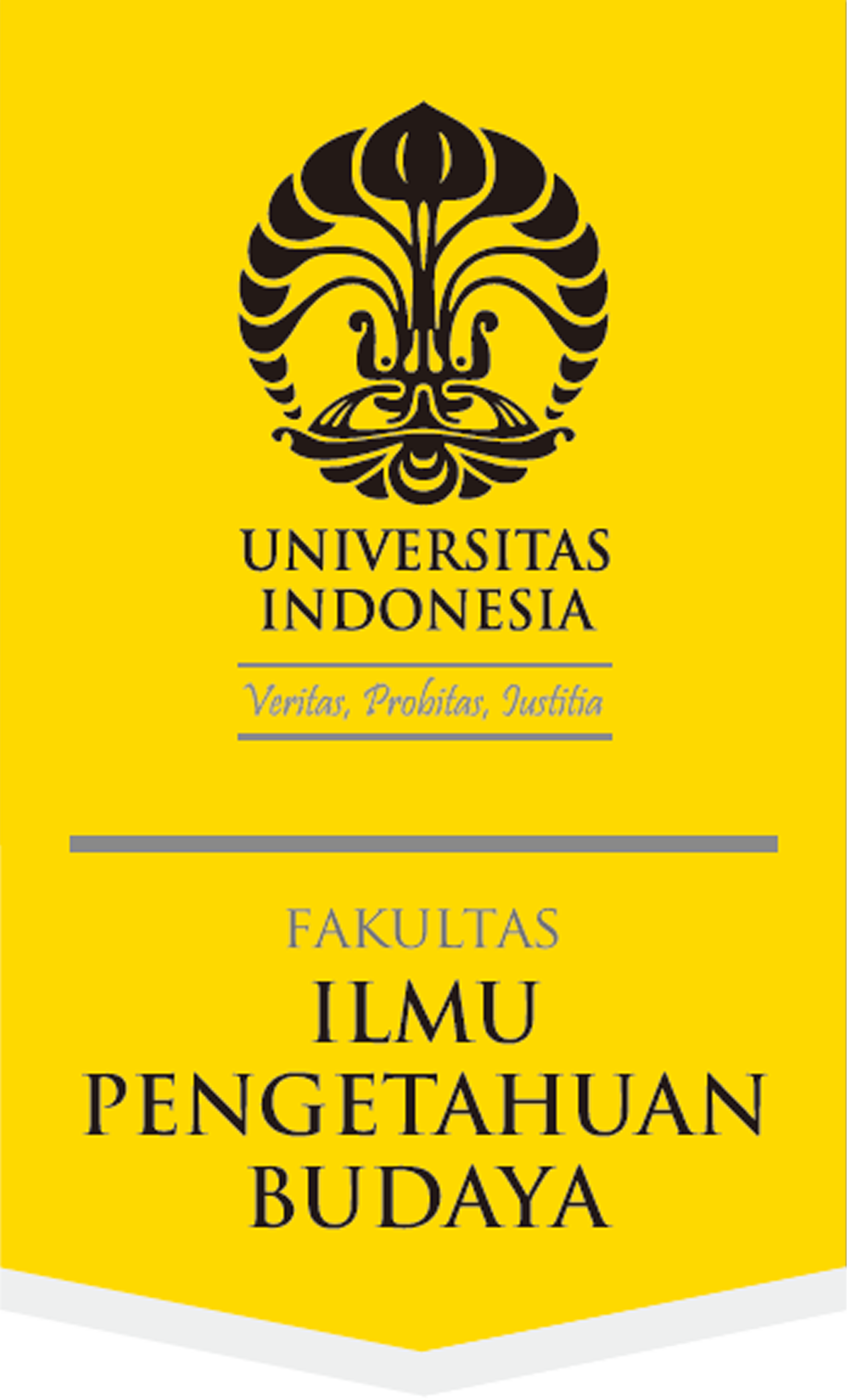Abstract
Kho Ping Hoo (1926-1994) is the most well-known of all Indonesian writers of popular silat stories, largely set in China, which describe the adventures and romances of legendary heroes famed for their skill in martial arts. It is less well-known that he began his career writing critical stories about socio-economic conditions in the late 50s and early 60s. This paper discusses one of these stories. It places the story in the context of political developments of the time, in particular as they affected the Chinese Indonesian community. The paper argues that this story and one or two others like it come at the end of a tradition of Sino-Indonesian literature which had flourished from the end of the nineteenth century until the mid-1950s. After 1960, Chinese-Indonesian writers cease writing realist fiction of any kind and write either silat stories or romantic stories set in middle class urban environments.
References
Ajip Rosidi. 2008. Hidup tanpa ijazah: yang terekam dalam kenangan. Bandung: Pustaka Jaya.
Coppel, Charles. 1983. Indonesian Chinese in crisis. Kuala Lumpur/Oxford University Press.
Cushman, Jennifer W. and Wang Gungwu (eds). 1988. Changing identities of the Southeast Asian Chinese since World War II. Hong Kong: Hong Kong University Press.
Foulcher, K. 1969. “A survey of events surrounding Manikebu; The struggle for cultural and intellectual freedom in Indonesian literature”, Bijdragen tot de Taal-, Land- en Volkenkunde 125: 429–465.
Foulcher, K. 1986. Social commitment in literature and the arts; The Indonesian “Institute of People’s Culture” 1950–1965. Clayton, Victoria: Center of Southeast Asian Studies, Monash University.
Hong Liu. 2011. China and the shaping of Indonesia 1945–1965. Singapore: NUS Press.
Jahja, H. Junus. 2002. “Siauw Giok Tjhan 1914–1981; Terpeleset”, in: H. Junus Jahya, Peranakan idealis; Dari Lie Eng Hok sampai Teguh Karya, pp. 123–132. Jakarta: Kepustakaan Populer Gramedia.
Kratz, Ernst Ulrich. 1992. “Peranakan writing and Indonesian literature after independence”, in: Claudine Salmon (ed.), Le Moment “sino-malais’ de la littérature Indonésienne, pp. 133–147. Paris: Association Archipel. [Cahier d’Archipel No. 19.]
Lombard, Denys and Claudine Lombard-Salmon. 2010. “Di persilangan kesusastraan dan sejarah; Taufan Gila Karya Njoo Cheong Seng (1950)”, in: Claudine Salmon, Sastra Indonesia awal; Kontribusi orang Tionghoa, pp. 506–522. Jakarta: Kepustakaan Populer Gramedia, EFEO, Forum Jakarta-Paris. [Originally published as “Au carrefour de la littérature et de l’histoire; Vent de folie de Njoo Cheong Seng (1950)”, in: Sitti Faizah Soenoto (ed.). 1998, Persembahan; Studi in onore di luigi Santa Maria, pp. 185–202. Napoli: Istituto Universitario Orientale. Istituto Universitario Orientale, Dipartimento di Studi Asiatici, Series LIII.]
Nio Joe Lan. 1962. Sastera Indonesia-Tionghoa. Djakarta: Gunung Agung.
Onghokham. 1970. “The case for assimilation”, in: H. Feith and Lance Castles (eds), Indonesian political thinking, 1945–1965, pp. 346–350. Ithaca, NY: Cornell University Press.
Pertemuan. (circa 1961). Kumpulan kisah pendek. Tasikmalaya: Djelita.
Pramoedya Ananta Toer. 1960. Hoa Kiau di Indonesia. Jakarta: Bintang Press.
Reeve, David, J.J. Rizal, and Wasmi Alhaziri (eds). 2007. Onze Ong; Onghokham dalam kenangan. Jakarta: Komunitas Bambu.
Salmon, Claudine. 1981. Literature in Malay by the Chinese of Indonesia. Paris: Association Archipel.
Salmon, Claudine (ed.). 1992. Le Moment “sino-malais” de la littérature Indonésienne. Paris: Asssociation Archipel. [Cahier d’Archipel No. 19.]
Salmon, Claudine. 2010. Sastra Indonesia awal; kontribusi orang Tionghoa. Jakarta: École française d’Extrême-orient and Kepustakaan Populer Gramedia. Selo
Soemarjan. 1964. Gerakan 10 Mei 1963 di Sukabumi. Bandung: Eresco.
Siauw Giok Tjhan. 1981. Lima jaman; Perwujudan integrasi wajar. Jakarta/ Amsterdam: Teratai.
Siauw Giok Tjhan. 1982. A Peranakan-Chinese and the quest for Indonesian nation-hood. Edited by Bob Hering; with a foreword by Go Gien Tjwan. Townsville, Qld.: James Cook University of North Queensland.
Sidharta, Myra. 1994. “Asmaraman Sukowati Kho Ping Hoo (b. 1926); Writer of cloak-and-dagger stories in Indonesia”, Archipel 48/1: 157–176.
Sidharta, Myra. 2004. Dari penjaja tekstil sampai superwoman; Biografi delapan penulis Peranakan. Jakarta: Kepustakaan Populer Gramedia.
Somers, Mary. 1964. Peranakan Chinese politics in Indonesia. Ithaca, NY: Southeast Asia Program, Departement of Asian Studies, Cornell University. [Interim Report Series – Modern Indonesian Project.]
Somers Heidhues, Mary. 1988. “Citizenship and identity; Ethnic Chinese and the Indonesian revolution”, in: Jennifer W. Cushman and Wang Gungwu (eds), Changing identities of the Southeast Asian Chinese since World War II, pp. 115–138. Hong Kong: Hong Kong University Press.
Somers Heidhues, Mary. 2007. “Remembering Ong from the sixties”, in: David Reeve et al. (eds), Onze Ong; Onghokham dalam kenangan, pp. 231–235. Jakarta: Komunitas Bambu.
Suryadinata, Leo. 1983. “Liem Koen Hian Peranakan yang mencari identitas”, Prisma 12/3: 71–85.
Thee Kian Wee. 2007. “Kawan lama saya Onghokham”, in: David Reeve et al. (eds), Onze Ong; Onghokham dalam kenangan, pp. 299–309. Jakarta: Komunitas Bambu.
Watson, C.W. 1972. “The sociology of the Indonesian novel 1920–1955”. MA thesis, University of Hull.
Recommended Citation
Watson, C.W.
(2017)
"An early story of Kho Ping Hoo,"
Wacana, Journal of the Humanities of Indonesia: Vol. 18:
No.
2, Article 11.
DOI: 10.17510/wacana.v18i2.595
Available at:
https://scholarhub.ui.ac.id/wacana/vol18/iss2/11









